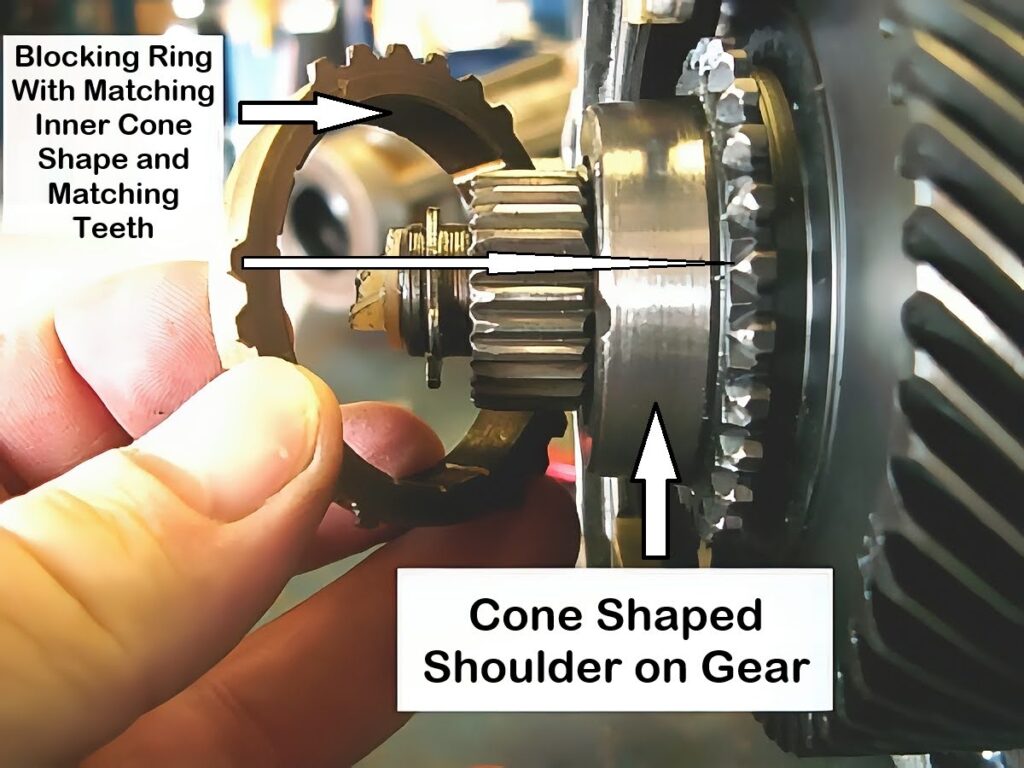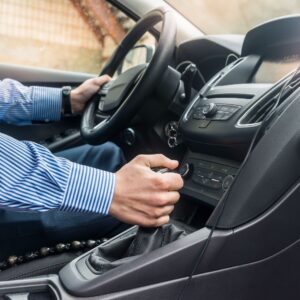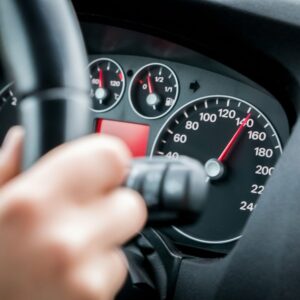Usually, you stop your vehicle by applying the brakes. When you step on the brake pedal, the braking system produces friction that slows down the rotation of the tires. This process is usually sufficient to decelerate or halt your car or truck.
However, what if you shift into reverse gear and hit the gas pedal to accelerate in the opposite direction? Can shifting into reverse while driving replace braking? What does it do to your vehicle’s transmission?
Should You Shift Into Reverse To Stop Your Car?
In a word: No. You should never try to stop your vehicle by shifting into reverse gear while it’s still going forward at a fast clip.
It doesn’t matter if you’re driving an automatic vehicle or one with a manual transmission. Shifting into reverse won’t decelerate or stop your car when you’re already going forward. All you’re going to do is inflict damage to the transmission, saddling you with a costly repair job.
Instead, take your foot off the gas pedal and step on the brake pedal to apply the brakes, slowing down your vehicle.
What Happens If You Shift Into Reverse While Driving?
Several things can happen when you shift the transmission into reverse while driving forward. Unfortunately, none of them slow down or stop your car. Instead, they can put you in danger.
Your Vehicle’s Reverse Inhibit Activates
Many vehicles will not shift their transmission into reverse gear when they move forward. These cars and trucks have a safety device called a reverse inhibitor.
The reverse inhibitor prevents the automatic transmission from shifting into reverse gear as long as the vehicle goes forward. You must slow down or stop your car or truck before the inhibitor enables the downshift into reverse.
In older models, the reverse inhibitor uses a hydraulically-powered manual system to keep the transmission from shifting into reverse. In newer models, the powertrain control module (PCM) operates the reverse inhibitor, countermanding the signal to shift gears.
As long as the reverse inhibitor runs correctly, you can’t shift the transmission into reverse gear by accident or design while your vehicle rolls forward. Even if you somehow get the transmission to shift into reverse, it won’t stop your vehicle like hitting the brakes does.
Stalling and Grinding Noises
Other vehicles don’t have the reverse inhibitor. If they do have one, this safety device might have developed an issue that prevents it from working properly. Either way, the engine might stall if you abruptly shift into reverse while driving forward.
The transmission delivers engine power to the drive wheels. Its gears spin in one direction to propel your vehicle forward and the opposite way when you drive in reverse.
Most automatic transmissions have a torque converter and use the transmission fluid to drive moving parts. This combination enables your vehicle to shift gears and increases the engine power transmitted through the transmission into the wheels.
This complex system can get disrupted if you shift the automatic transmission into reverse while traveling forward.
Skidding
Even if the transmission manages to spin the drive wheels in reverse, your vehicle isn’t going to stop. Instead, it might skid out of control. Radial tires grip the road in a big way.
Driving forward imparts significant kinetic energy to your vehicle. Between the momentum and the existing tire traction on the road surface, there’s a lot of force to overcome. There’s no way the drive wheels spinning in reverse can overpower the combination in the brief time available.
Furthermore, having the drive wheels spinning in reverse and the other wheels rotating forward can disrupt tire traction. Thus, it might lead to skidding, depriving you of any way to brake or steer your vehicle.
Will Shifting In Reverse Damage The Transmission?
Yes, if there is no reverse inhibitor built in, and on most vehicles built before 1990 (and some built after), there was no reverse inhibitor function in automatic transmissions. The transmission isn’t designed to shift into reverse when its gears are already spinning to propel the vehicle forward.
In a manual transmission, the gear shift mechanism is physically locked to make shifting into reverse difficult. Unless you install lockout rings or push down on the stick shift, you cannot deliberately shift into reverse while driving forward at typical speeds.
Of course, since the gears are whirling in the opposite direction, you’ll just hear some nasty grinding noises in most cases. If you do manage to get it into reverse going down the road on a 5 speed where fifth gear shares a synchronizer sleeve with reverse, the sleeve will probably just shear all the little teeth off the reverse gear when you release the clutch (this has happened, believe it or not).
If you try to select reverse while moving forward on a transmission that uses a moveable spur gear, you’ll just hear a nasty grinding noise.
Furthermore, manual transmissions have a mechanism that alters how fast the gears go for smooth engagement. In older vehicles, this was the synchromesh. The synchronizing device ensures the transmission gears spin in sync, minimizing heat and wear while maximizing efficiency.
Accidentally or deliberately shifting the transmission into reverse while driving forward can desynchronize the spinning gears. The synchronizer will try to match the rotational speed of the shaft. As the gears spin faster, they generate more heat and wear out faster. If they spin too fast, they can get damaged.
More About the Synchronizing Device

Each gear has a cone-shaped surface and a toothed blocker ring with a matching cone shaped inner surface with linings or grooves. The synchronizer sleeve first engages the blocker ring, which causes it to bring the desired gear to the same speed as the synchronizer sleeve before the gear is fully engaged. This works beautifully.
In the transmission pictured (5th gear is the one you see) the reverse gear has been removed for clarity and shares the same synchronizer sleeve, but reverse doesn’t have a brass synchronizer like this gear. It doesn’t need one.
The reverse gear on this transmission does, however, have the little teeth like you see on the 5th gear in the photo. If you put this transmission in reverse, all the little teeth will be sheared, and reverse will never work again until the reverse gear is replaced.
What To Do If You Accidentally Shift Into Reverse While Driving Forward
If you shift into reverse by accident, stay calm. Panicking will only increase the likelihood of additional mistakes.
Has your vehicle’s engine stalled? Gently release the gas pedal and shift the transmission into neutral gear. Allow your car to coast to the side of the road, moving it away from traffic.
A stalled engine might deprive your vehicle of power steering assist and power brake assist. If this happens, bring your vehicle to a safe stop on the side of the road. Once your car halts completely, shift the transmission into park mode. Turn the engine off before starting it again.
After getting the engine to run again, shift into drive and drive at a slow pace. If your vehicle seems okay, head to a trusted auto repair shop and get the transmission checked for problems.
If you hear grinding or howling noises, pull over. Driving with a faulty transmission can damage the system even further. Instead, call for a tow.
Any information provided on this Website is for informational purposes only and is not intended to replace consultation with a professional mechanic. The accuracy and timeliness of the information may change from the time of publication.



























